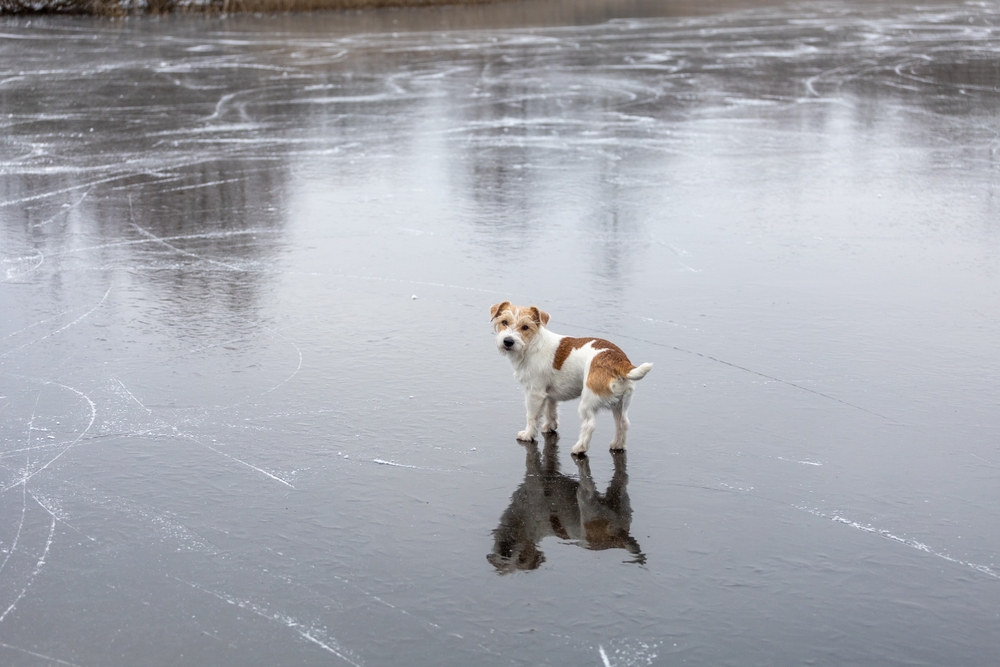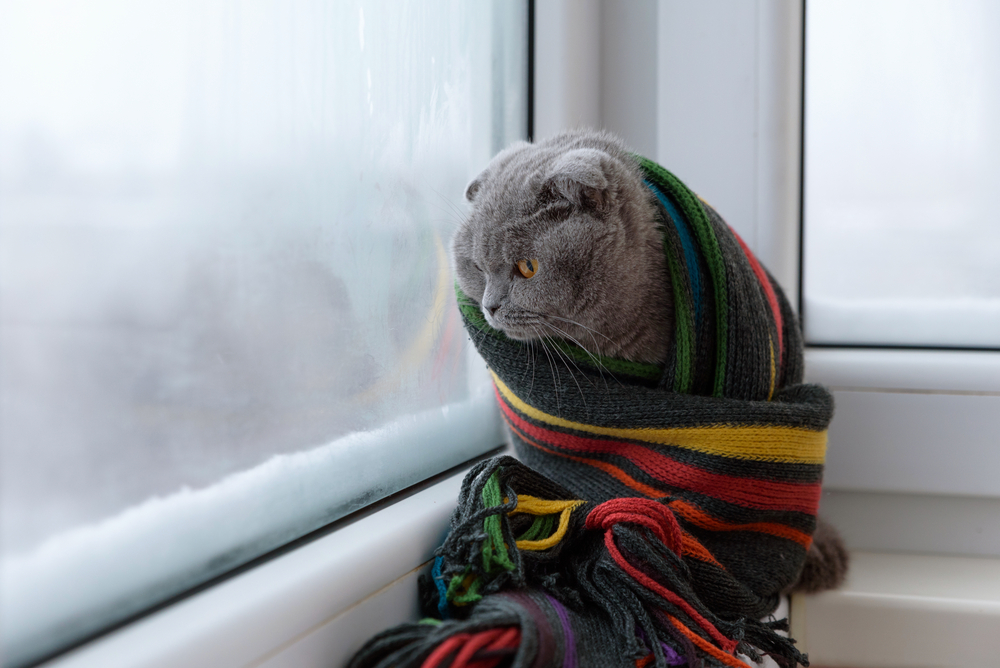From frostbite and hypothermia to antifreeze poisoning and chemical burns, cold weather poses unique hazards that can affect your pet’s health and safety. While many people assume pets are built for the cold—especially those with thick fluffy coats—all pets are susceptible to the risks that frigid temperatures, icy surfaces, and deicing chemicals pose. Our Willow Wood Animal Hospital team explains five common cold-weather pet hazards to help you keep your pets safe during the chilly winter months
Cold-weather pet hazard #1: Hypothermia
All pets are susceptible to cold-weather threats, such as hypothermia, and certain pets, including puppies, kittens, seniors, and small and short-haired pets, have a high risk. Hypothermia occurs when your pet’s normal 101- to 102.5-degree body temperature drops below 99 degrees as a result of prolonged cold-temperature exposure. Hypothermia signs include shivering, lethargy, delayed reflexes, dilated pupils, and slowed breathing. Reduce your pet’s hypothermia risk by following these cold-weather tips:
- Limit time outdoors during extremely cold weather.
- Supervise your pet outdoors in cold weather and watch for discomfort signs.
- Consider outfitting your short-haired breed dog in a pet sweater or coat before they go outside.
- Leave your pet home when running errands.
- Never leave your pet outside for extended periods in below-freezing temperatures.
Cold-weather pet hazard #2: Frostbite
If your pet is outdoors during frigid temperatures, especially below 32 degrees, they risk developing frostbite. As in humans, prolonged low-temperature exposure causes a pet’s blood vessels to constrict to redirect blood from the extremities to warm and protect the vital organs, including the brain, lungs, and heart. Your pet’s nose, tail, ears, and paws are most susceptible to tissue damage because of this protective reaction. While cold-weather breeds, such as Siberian huskies and Alaskan malamutes, are not prone to frostbite because of their thick fur coats, all pets are at risk. Although rarely life-threatening, frostbite is often a precursor to hypothermia, which can be fatal in some cases. Your pet may be experiencing frostbite if they exhibit any of the following signs:
- Brittle or shriveled skin that stays cold to the touch
- Skin that is initially pale or bluish-white, becoming red and puffy
- Red or grey-tinged skin on the ears, tail, or nose
- Ice crystals in or around the nose
Limit your pet’s time outdoors during cold weather. To help protect your pet from frostbite, follow these tips:
- Ensure your pet’s fur is dry before going outside to prevent their body temperature from quickly decreasing.
- Dry your pet thoroughly if they get wet.
- Inspect your pet’s paws, ears, and tail regularly for frostbite signs.
Cold-weather pet hazard #3: Chemical burns
Ice-melting products used on sidewalks and driveways can cause chemical burns on your pet’s paws. Additionally, if ingested, these chemicals can be toxic. Tips to protect your pet from deicing products include:
- Use pet-safe deicers. Some deicers don’t contain salt or chloride, making them safer for pets. Check the label to ensure the product is pet-friendly.
- Wipe your pet’s paws when they come inside to remove any chemical residue.
- Use paw balm for protection and to treat dry, cracked paw pads.
- Protect your pet’s paws with booties if they will tolerate wearing them.
Cold-weather pet hazard #4: Antifreeze toxicity
Antifreeze—often used to winterize cars and homes—contains ethylene glycol, a dangerous ingredient that attracts pets because of its sweet taste. This substance is highly toxic to pets. Ingesting a small amount of this substance can prove deadly for a dog or cat. Contact our Willow Wood Animal Hospital team or the American Society for the Prevention of Cruelty to Animals (ASPCA) Animal Poison Control Center immediately if you know or suspect your pet has ingested antifreeze, which is rapidly absorbed in the gastrointestinal (GI) tract. Prevent your pet from ingesting antifreeze by following these tips:
- Regularly check around your car to see if antifreeze has leaked out.
- Clean up spills immediately.
- Keep your pet away from parked vehicles.
- Store antifreeze containers securely out of your pet’s reach.
- Use a pet-safe antifreeze that contains propylene glycol rather than ethylene glycol.
Cold-weather pet hazard #5: Unstable ice

A frozen body of water may appear solid, but your pet can easily fall through thin ice and struggle to escape, leading to a dangerous and potentially fatal situation. Remember, ice that doesn’t hold your pet won’t hold you, and you’ll both be in grave danger if you try to rescue them. To ensure you and your pet avoid a disastrous scenario, follow these tips:
- Keep your pet leashed near frozen bodies of water.
- Avoid walking on ice-covered surfaces when possible.
- Teach your pet to come when called to help prevent them from venturing onto unsafe ice.
If you have questions about cold safety or would like to schedule a wellness exam to determine your pet’s cold tolerance, contact our team at Willow Wood Animal Hospital team.







Leave A Comment